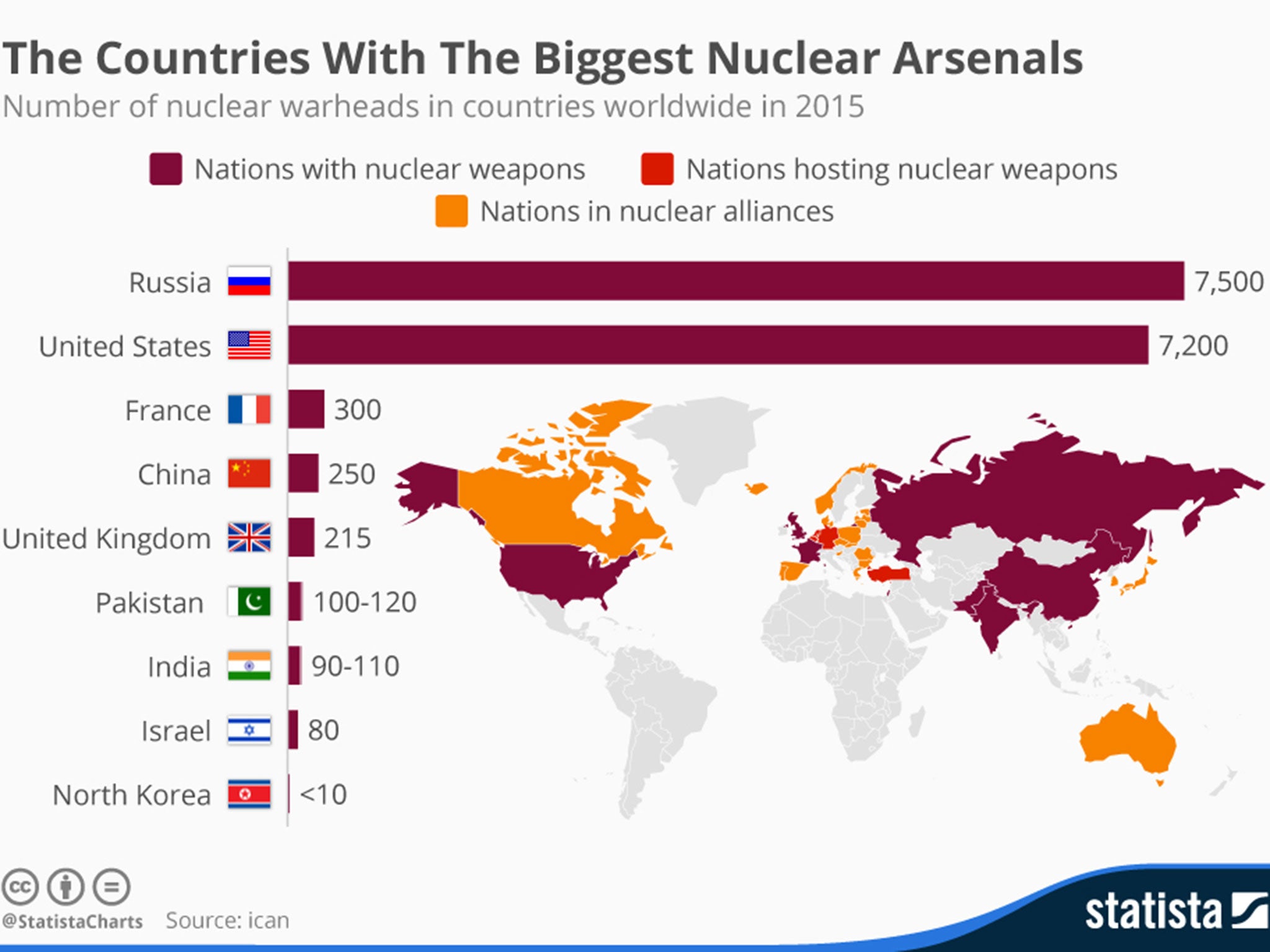Nuclear weapons material flown in UK airspace over 20 times in the last five years, government says
The flights were between the UK and the United States

Your support helps us to tell the story
From reproductive rights to climate change to Big Tech, The Independent is on the ground when the story is developing. Whether it's investigating the financials of Elon Musk's pro-Trump PAC or producing our latest documentary, 'The A Word', which shines a light on the American women fighting for reproductive rights, we know how important it is to parse out the facts from the messaging.
At such a critical moment in US history, we need reporters on the ground. Your donation allows us to keep sending journalists to speak to both sides of the story.
The Independent is trusted by Americans across the entire political spectrum. And unlike many other quality news outlets, we choose not to lock Americans out of our reporting and analysis with paywalls. We believe quality journalism should be available to everyone, paid for by those who can afford it.
Your support makes all the difference.Material used to make nuclear weapons has been flown in British airspace 23 times in the past five years, the Government has admiteed.
The flights were transporting “Defence Nuclear Materials” between the UK and US, the minister for the Armed Forces, Penny Mordaunt, said.
However, despite the potential hazard posed if a plane had crashed, the precise nature of the materials is being kept secret.
The revelations come as a result of a question asked by Brendan O'Hara, the SNP MP for Argyll and Bute. He wanted to know if nuclear weapons materials had ever been flown into Scottish airspace.
Ms Mordaunt said: “In the last five years, 23 flights carrying Defence Nuclear Materials (DNM) were undertaken. All flights were between the UK and the United States on fixed wing aircraft under the control of UK Armed Forces.”

“No such flights passed over Scotland, or involved the use of helicopters.”
She declined to elaborate further on the materials for security reasons: “I am withholding details of the physical state, mass and radiological quantity of DNM transported as disclosure would or would be likely to prejudice national security.”
“The transport of DNM is carried out to the highest standard in accordance with stringent safety regulations. In over 50 years of transporting DNM in the UK, there has never been an incident that has posed any radiation hazard to the public or to the environment.”
Mr O’Hara said in response: “This answer is alarming and highlights a practice most of the public are unaware of.”
“The MoD need to outline what risk and safety assessments they made about these flights and precisely when and what areas of UK airspace were used,” the Guardian reported.
“I fear the MoD does not have a great track record on transparency when it comes to nuclear issues – and this answer clearly begs more questions.”
The general secretary of the Campaign for Nuclear Disarmament Kate Hudson told the Independent:
“The minister is presumably referring to the transportation of material relating to nuclear warhead production – a reminder of one of the ways Trident isn’t an independent nuclear weapons system.”
“But her answer raises a number of important questions. Why are there so many journeys? Why are such large quantities?"
She added: "It’s not answers to these questions that pose a threat to our security, but the fact that these materials of being transported in the first place. Trident makes us a target, and no matter how stringent the safety regulations, we will not deal with this threat by spending up to as much as £183 billion on replacing Trident.”
Other critics have voiced fears that an accident involving an aircraft carrying nuclear materials could contaminate large areas of land and have raised doubts that transporting the materials is in line with civil regulations for the international movement of nuclear material.
Training exercises run by the Ministry of Defence codenamed ‘Astral Bend’ took place in 2011 and 2012 which dealt with scenarios in which planes carrying nuclear materials crashed in mainland Britain.
The training exercises revealed numerous shortcomings in the emergency response, which would have led to “avoidable deaths,” according to the Guardian.
However, the emergency services have said that their hazardous materials response has since improved.
Join our commenting forum
Join thought-provoking conversations, follow other Independent readers and see their replies
Comments